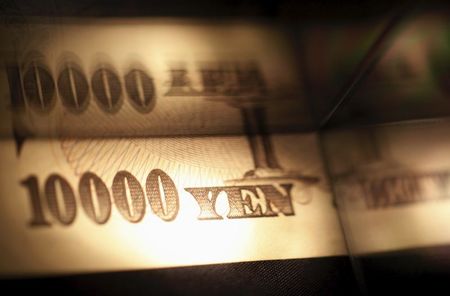
Investing.com– Japanese government officials kept up their verbal warnings on potential intervention in currency markets, especially after hotter-than-expected U.S. inflation data saw the Japanese yen hit its weakest levels since 1990.
The pair shot up on Wednesday to as high as 153.24- a new 34-year high. The spike came chiefly on the back of a stronger dollar, with the hitting a five-month high.
But the USDJPY pair retreated from those highs in Asian trade on Thursday, hovering around 152.84 by 22:23 ET (02:23 GMT). The drop came after Japanese Finance Minister Shunichi Suzuki said recent “excessive” moves in foreign exchange were “undesirable,” and that he was in regular contact with Vice Finance Minister Masato Kanda over the currency market.
Kanda himself said earlier in the session that he will not rule out any moves to stem “disorderly” currency moves, reiterating his earlier warnings over potential intervention in currency markets.
Fears of intervention helped spur some strength in the yen. Kand had spearheaded record-high levels of government intervention in 2022, when USDJPY had last tested levels above 152.
USDJPY outlook strong in face of higher-for-longer US rates
But while government intervention is expected to trigger some pullback in the USDJPY pair, the outlook for the yen remains dour, especially in the face of higher-for-longer U.S. interest rates.
Stronger-than-expected U.S. inflation data was the latest driver of yen weakness, as the data saw traders largely price out expectations of early rate cuts by the Fed.
This notion was furthered by the , which showed central bank officials were concerned over sticky inflation even before March’s overheated CPI reading.
U.S. interest rates are widely expected to be the key drivers of the yen in the near-term, given that the Bank of Japan has offered few cues on when it will increase interest rates further.











